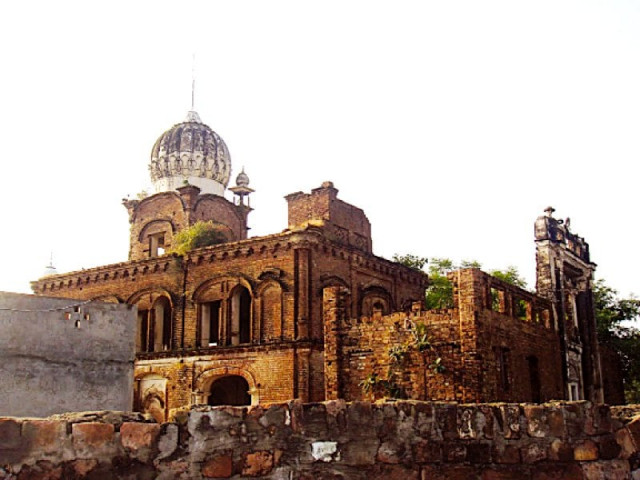Seminar: Archaeologists urge preservation of monuments in Azad Kashmir
Say heritage sites could attract foreign tourists as well.

Monuments including places of worship have either been encroached upon or have been converted to uses other than the ones they were intended for, denying access to tourists. PHOTO: NADEEM IQBAL
Azad Jammu and Kashmir (AJK), a region most famous for being at the core of India and Pakistan’s differences, has much more to offer the world than just the wars fought over it. A team of archaeologists and research students who undertook the documentation of 100 archaeological sites in Muzaffarabad Division presented their findings during a seminar earlier this week.
Sharing their observations, the researchers said heritage sites built by Mughals, Dogras and Sikhs represented historical treasures which were under threat due to neglect and natural calamities. During the seminar held at the Quaid-i-Azam University Taxila Institute of Asian Civilisation (TIAC), they urged the concerned authorities to preserve heritage sites, which in turn would also attract foreign tourists.

During the survey, monuments including Thorchi Fort, Sharda Fort, Chak Fort, Barnad Fort, Aion Fort Ranbir Singh Baradari, Hindu temples, rock-cut sanctuaries, Nagara, Baradari, wells, Ali Baig Gurdwara and rock boulders with historical impressions were documented. Researchers found that most of them had become shelters for stray animals and drug addicts.
“For the first time in 120 years, these 100 archaeological sites in AJK have been mapped and documented,” said TIAC Director Muhammad Ashraf, adding, “The survey will surely help to attract foreign scholars and researchers to the region.”
Rukhsana Said Khan, an MPhil researcher, said, I’m lucky to be part of the first team to ever document the monuments of AJK. Khan was the captain of the research team.
To highlight the neglect of archaeological sites, researchers revealed that Ali Baig Gurdwara, a popular place of worship for Sikhs in Ali Baig village, has been turned into the Muhammad Yaqoob Shaheed High School for Girls. Located on the northeastern side of the Mirpur-Jhelum link road in Bhimber tehsil, the three-storey building also served as a refugee camp for three years, then a police station, a soap factory and a primary school for girls. The gurdwara’s domes have been decorated with lotus flowers and can be seen from a distance. The survey, which was a joint venture of TIAC and the AJK Tourism Department, was funded by the Higher Education Commission under its Thematic Research Grant Programme.
Published in The Express Tribune, January 2nd, 2014.



















COMMENTS
Comments are moderated and generally will be posted if they are on-topic and not abusive.
For more information, please see our Comments FAQ